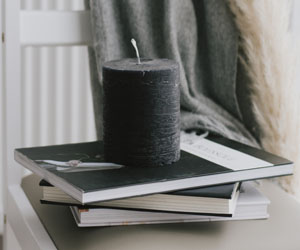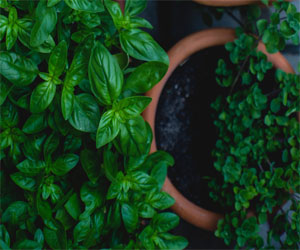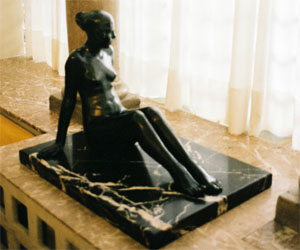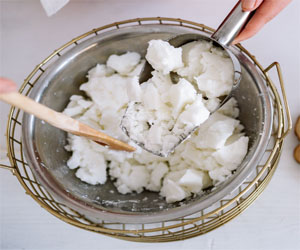


Relaxation Through Candles

In today's fast-paced world, the pursuit of relaxation and tranquility has never been more essential. Our daily lives are filled with constant demands, stressors, and digital distractions that can leave us feeling overwhelmed and in need of a reprieve. One effective method for achieving much-needed relaxation is through the use of candles. The soft, gentle glow and enchanting scents of candles create an ambiance that can help melt away stress and create a soothing atmosphere. In this article, we explore how candles can be a pathway to relaxation and offer tips on incorporating them into your daily routine.
The Power Of Candlelight
Candlelight has a remarkable ability to transform a space, offering an intimate, serene atmosphere that encourages relaxation. The warm, flickering glow of a candle can induce a sense of calm and comfort, making it a perfect tool for unwinding after a long day. Whether you're enjoying a solo evening of self-care or creating a romantic ambiance for a special occasion, the simple act of lighting a candle can work wonders for your well-being.
Aromatherapy And Relaxation
In addition to their enchanting light, candles can be enhanced with soothing fragrances that promote relaxation. Aromatherapy candles are infused with essential oils that can evoke a variety of emotions and sensations. For instance, lavender is known for its calming and stress-reducing properties, while citrus scents like lemon and orange can boost energy and elevate mood.
Incorporating Candles Into Your Relaxation Routine
Bath Time Bliss: A warm bath can be made even more indulgent with the addition of scented candles. The soft lighting and aromatic scents can transform your bathroom into a personal sanctuary, creating an oasis of relaxation.
Meditation And Mindfulness: Candles are often used as focal points during meditation and mindfulness exercises. Gazing at the flame can help clear your mind and bring about a sense of inner peace and tranquility.
Dinner By Candlelight: Set the stage for relaxation by enjoying a quiet, candlelit dinner. Whether alone or with a loved one, this simple act can turn an ordinary meal into a serene, enjoyable experience.
Bedroom Retreat: Make your bedroom a haven of relaxation by placing scented candles on your bedside table. The soothing scent and soft light can help you unwind and prepare for a restful night's sleep.
Outdoor Escapes: Take your relaxation outdoors by lighting candles on your patio or in your garden. The combination of natural surroundings and candlelight can create a tranquil atmosphere that fosters relaxation.
Yoga And Stretching: Use candles as an integral part of your yoga or stretching routine. The combination of calming scents and gentle lighting can enhance your practice and help you achieve deeper relaxation.
Relaxation through candles is a simple yet powerful way to find tranquility and serenity in a hectic world. The soft glow and soothing scents of candles can transport you to a place of calm and inner peace, allowing you to shed the stresses of the day. By incorporating candles into various aspects of your daily routine, you can create a soothing atmosphere that supports relaxation and promotes overall well-being. Whether you're seeking a moment of solitude or looking to share a peaceful experience with a loved one, the magic of candlelight can help you achieve the relaxation you so deserve.
Tips For Small And Large Gardens
 Select containers with proper drainage and consider hanging pots, window boxes, or vertical herb gardens.
Select containers with proper drainage and consider hanging pots, window boxes, or vertical herb gardens.
Group compatible herbs in a single pot or use tiered plant stands to stack multiple containers vertically.
Regularly prune and harvest your herbs to maintain their size and prevent overcrowding.
Indoor Herb Gardens
If you have limited outdoor space, an indoor herb garden can provide fresh herbs year-round. Some tips for indoor gardening include:
Place pots on windowsills or under artificial grow lights to ensure they receive adequate sunlight.
Consider using self-watering pots or hydroponic systems to make indoor herb gardening more convenient.
Be attentive to indoor humidity and ventilation to prevent issues like mildew or pests.
Keep pots near the kitchen for easy access to fresh herbs while cooking.


Creativity, Skill, And Personal Fulfillment
 Limitless Creativity: Woodworking projects provide a platform for limitless creativity. From crafting custom furniture pieces that blend seamlessly with your home's decor to designing unique wooden sculptures that captivate the imagination, there are no boundaries when it comes to the artistic possibilities. Woodworkers have the privilege of transforming their ideas and visions into tangible forms, resulting in projects that reflect their own unique style and personality.
Limitless Creativity: Woodworking projects provide a platform for limitless creativity. From crafting custom furniture pieces that blend seamlessly with your home's decor to designing unique wooden sculptures that captivate the imagination, there are no boundaries when it comes to the artistic possibilities. Woodworkers have the privilege of transforming their ideas and visions into tangible forms, resulting in projects that reflect their own unique style and personality.
Practicality Meets Artistry: Woodworking is not solely about artistic expression. Many projects fuse practicality with artistry. Whether you're building a sturdy bookshelf, a functional workbench, or a custom kitchen cabinet, your creations are designed to enhance daily living while showcasing the craftsmanship behind the work. This blend of form and function adds depth to the world of woodworking projects, where utility meets aesthetics.
The Learning Curve: Woodworking projects encompass a wide spectrum of complexity, catering to beginners and experts alike.
From Earth To Artistry
 The History Of Clay Sculptures: The origins of clay sculptures can be traced back to prehistoric times when early humans fashioned clay into small figurines and objects. These early creations were often utilitarian, serving as fertility symbols or talismans. As civilizations advanced, clay sculptures gained more prominence, taking on religious, decorative, and artistic significance.
The History Of Clay Sculptures: The origins of clay sculptures can be traced back to prehistoric times when early humans fashioned clay into small figurines and objects. These early creations were often utilitarian, serving as fertility symbols or talismans. As civilizations advanced, clay sculptures gained more prominence, taking on religious, decorative, and artistic significance.
In ancient Greece, for example, clay was employed to create intricate figurines, pottery, and votive offerings. The renowned terracotta warriors of China's Qin Dynasty, dating back over 2,000 years, are an exceptional example of the artistry and craftsmanship that can be achieved through clay sculpture. These life-sized, meticulously detailed soldiers were created to accompany the first Emperor of China in his afterlife, attesting to the importance of clay sculptures in historical contexts.
The Techniques Of Clay Sculpting: Clay sculpting encompasses various techniques, with artists employing handbuilding, coiling, slab-building, and wheel-throwing methods. Handbuilding involves directly manipulating the clay by pinching, coiling, and smoothing to create the desired shape. Coiling uses rolled clay ropes to build forms, while slab-building cuts flat pieces of clay to construct sculptures. The potter's wheel is yet another approach, allowing for precision and symmetry in shaping clay.
The Firing Process: One of the defining aspects of clay sculptures is the firing process. After the artist shapes the piece, it is left to dry, followed by firing in a kiln. Kiln temperatures can vary, resulting in different finishes and properties of the sculpture. Low-temperature firing may create porous, unglazed pieces, while high-temperature firing can produce sturdy, vitrified sculptures. The application of glazes before the final firing stage adds color, texture, and depth to the artwork.
Industry Insights
 Terroir's Influence: Terroir, a French term referring to the unique combination of soil, climate, and geography in a particular region, plays a pivotal role in winemaking. Each wine region has its distinct terroir, shaping the character of the grapes and, consequently, the wine. The influence of terroir allows for a profound connection between the land and the wine, and it's an essential concept for understanding wine industry nuances.
Terroir's Influence: Terroir, a French term referring to the unique combination of soil, climate, and geography in a particular region, plays a pivotal role in winemaking. Each wine region has its distinct terroir, shaping the character of the grapes and, consequently, the wine. The influence of terroir allows for a profound connection between the land and the wine, and it's an essential concept for understanding wine industry nuances.
Sustainability And Organic Practices: In recent years, there has been a growing emphasis on sustainable and organic winemaking practices. Consumers are increasingly conscious of the environmental impact of their choices, and wineries are responding by adopting eco-friendly approaches. This shift towards sustainability reflects a broader commitment to preserving the natural balance and ensuring the longevity of wine production.
Wine Tourism: Wine tourism has blossomed into a thriving sector of the wine industry. People are not only enjoying wine but also seeking experiences that bring them closer to the heart of winemaking. Vineyard tours, wine tastings, and winery visits have become integral components of the industry, allowing enthusiasts to connect with the process and the people behind the wine.
Emerging Wine Regions: While established wine regions like Bordeaux, Napa Valley, and Tuscany continue to thrive, there is a growing interest in wines from emerging regions. Countries like Chile, Argentina, New Zealand, and South Africa are gaining prominence in the global wine market. Their unique offerings and affordable price points have made them appealing to a broader audience.
Wine Technology: Advancements in technology have significantly impacted the wine industry. From precision viticulture using drones to monitor vineyards to the use of artificial intelligence for predicting optimal harvest times, technology is changing the way wine is produced and marketed. Wineries are also leveraging social media and e-commerce to reach a wider audience and engage with consumers directly.
A Step-By-Step Guide
 Gathering Materials
Gathering Materials
The first step in the candle making process is to gather all the necessary materials and tools. This typically includes wax (common options are paraffin, soy, or beeswax), a double boiler or microwave for melting the wax, a thermometer, wicks, fragrance oils, and candle dyes if you want to add color. It's essential to ensure that your workspace is clean and well-ventilated for safety.
Melting The Wax
Once you have all your materials ready, it's time to melt the wax. This can be done by using a double boiler or a microwave. If using a double boiler, place the wax in the top pot and heat it gently until it becomes a liquid. If using a microwave, cut the wax into smaller pieces, place it in a microwave-safe container, and heat it in short bursts until it's fully melted. It's crucial to monitor the temperature of the wax using a thermometer to prevent overheating, which can be dangerous.
Adding Fragrance And Color
If you want to create scented and colored candles, this is the stage to do so. Add fragrance oils to the melted wax and stir thoroughly to ensure an even distribution of the scent. Similarly, add candle dye to achieve your desired color. The amount of fragrance and dye you use will depend on the type and brand, so consult the instructions provided with your supplies.
Preparing The Wick
While the wax is still liquid, it's time to prepare the wick. Cut the wick to the desired length, making sure it's a couple of inches taller than your chosen container or mold. Secure the wick in the center of the container or mold using a wick holder or adhesive. Ensure the wick remains straight and centered as the wax cools and solidifies.